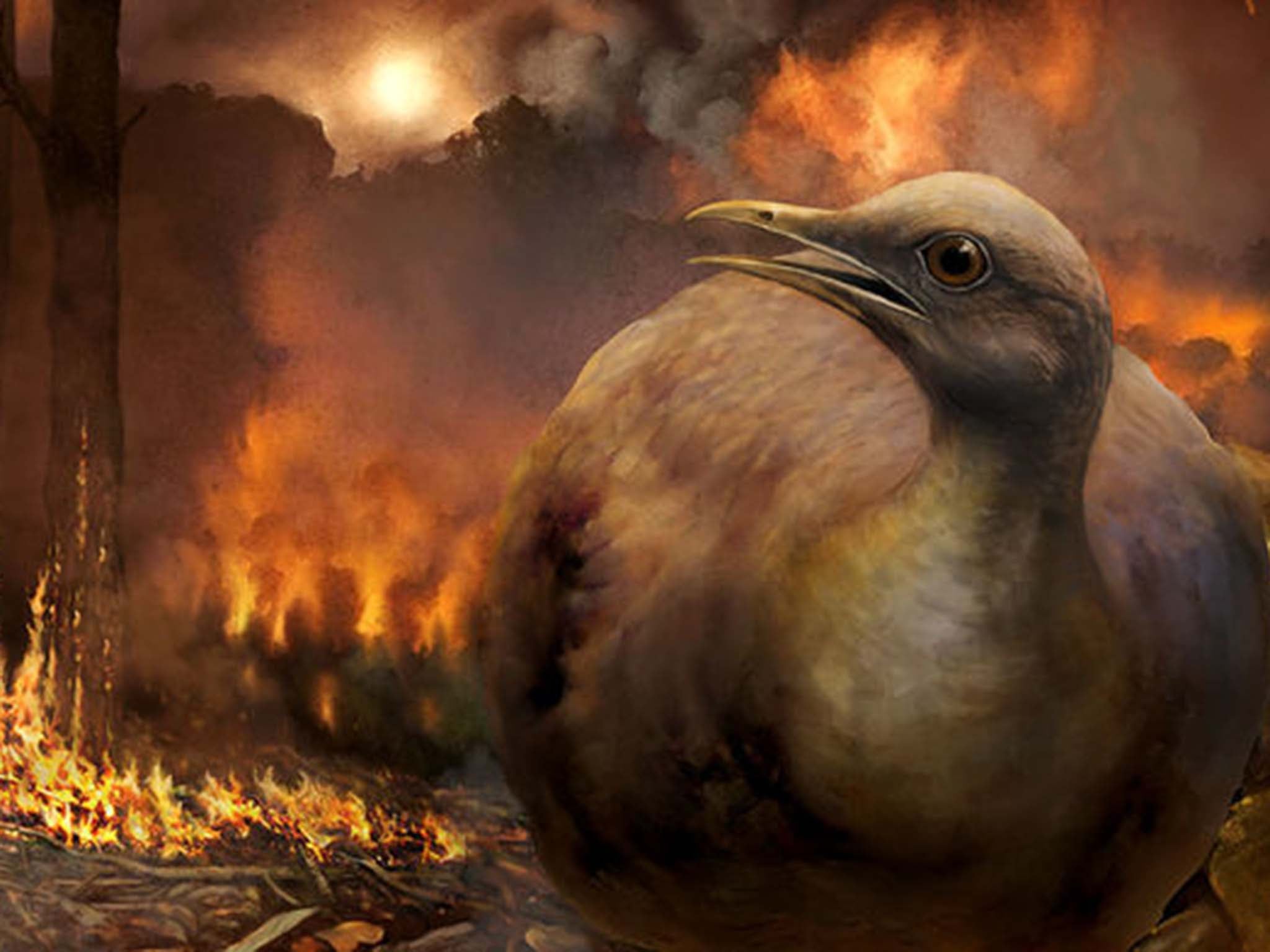How birds survived the dinosaur-killing asteroid
New research shows that ground-dwelling birds were more likely to survive the devastation

Your support helps us to tell the story
From reproductive rights to climate change to Big Tech, The Independent is on the ground when the story is developing. Whether it's investigating the financials of Elon Musk's pro-Trump PAC or producing our latest documentary, 'The A Word', which shines a light on the American women fighting for reproductive rights, we know how important it is to parse out the facts from the messaging.
At such a critical moment in US history, we need reporters on the ground. Your donation allows us to keep sending journalists to speak to both sides of the story.
The Independent is trusted by Americans across the entire political spectrum. And unlike many other quality news outlets, we choose not to lock Americans out of our reporting and analysis with paywalls. We believe quality journalism should be available to everyone, paid for by those who can afford it.
Your support makes all the difference.The asteroid that killed the dinosaurs also wiped out every land-dwelling animal weighing over 5kg. It caused wildfires, acid rain, protracted darkness and global cooling that made the world as inhospitable as some of the most barren places known today. If the same asteroid struck this afternoon, it would be lights out for humankind.
Yet the mass extinction, known as the Cretaceous-Palaeogene or “K-Pg” event, was just as important for what it created as for what it destroyed. Recent discoveries suggest much of Earth’s modern biodiversity – including major groups of birds, mammals, marine fishes, and frogs – arose rapidly in the aftermath of this planet-altering catastrophe.
My colleagues and I have just published research in Current Biology showing that only a small number of ancestral bird species survived the K-Pg, meaning birds were lucky to make it through at all. We also found that these species were more likely to survive if they didn’t live in trees, which were also devastated by the asteroid impact.
Today, birds are the most diverse group of vertebrate animals on land, numbering nearly 11,000 species. But birds can be fragile: over 1,000 bird species have been driven to extinction by human activity to date. Birds must have been highly susceptible to the ancient armageddon of the K-Pg and its desolate aftermath.
Indeed, our work seems to corroborate the profound impact of the K-Pg extinction on ancient birdlife. Despite an abundance of bird-like creatures persisting until the end of the age of dinosaurs, the ancestors of as few as five major bird lineages survived the K-Pg. Among surviving species, population sizes were probably devastated. The fossil record of land vertebrates from this time is notoriously sparse and that is probably partly to be because so few survived the extinction.
So, how did birds manage to make it through this bleak phase of Earth’s history before thriving in its wake? We know that smaller animals tend to be better at surviving mass extinctions because they need less food and there tends to be more of them, so smaller birds had an evolutionary advantage. But our recent work also shows that those birds capable of living on the ground were also likelier to survive.
We teamed up with palaeobotanists to study the fossil record of pollen across the K-Pg. Our work corroborated previous evidence that forests were devastated for a period of at least 1,000 years after the asteroid impact. Following this desolate interval, a slow but steady return of fossil pollen from forest-forming trees shows the literal rise of habitats suitable for tree-dwelling birds.
From there, we delved into the direct influence of the extinction event on birdlife 66 million years ago. We performed a statistical analysis of the ecological habits of modern birds to work out if their ancestors were more likely to live in the trees than on the ground, a process called ancestral ecological reconstruction. This indicated that the birds that survived the K-Pg mass extinction, the ancestors of all birds living today, were almost certainly ground-dwelling.
A prominent avian casualty of the K-Pg was a group called the “opposite birds”, the most diverse and abundant bird-like creatures around before the asteroid impact. Despite their large numbers during the age of dinosaurs, opposite birds went completely extinct after the K-Pg, probably partly because they tended to live in trees.
Into the trees
By examining the hind limbs of bird fossils from after the K-Pg, we also found that several bird groups that today are specialised for life in the trees probably had ground-dwelling ancestors that didn’t have the perching abilities of their descendants. This supports the idea that many different groups of birds from this time evolved to move into the trees repeatedly and independently.
What does this all mean? First, it tells us that, although so many modern bird species make their home in the trees, the ancestors of all tree-dwelling bird groups moved there from the ground up.
More broadly, this work emphasises how close the world was to losing its bird life entirely. It has become common knowledge that dinosaurs did not go completely extinct at the K-Pg, since living birds are dinosaurian descendants. But increasingly, evidence suggests the very survival of birds through the K-Pg extinction was highly improbable. So, show some gratitude for the mere presence of our feathered friends. We were almost robbed of the robins and finches in our gardens (and the seagull who made off with your hotdog) before they ever evolved.
Daniel J Field is a prize fellow in evolutionary biology and palaeontology at the University of Bath. This article first appeared on The Conversation (theconversation.com)
Join our commenting forum
Join thought-provoking conversations, follow other Independent readers and see their replies
Comments